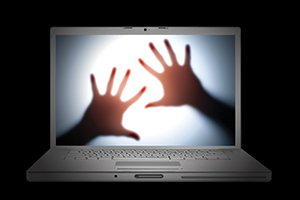IT security in the news - what does this mean for you?
12 Jun 2014
IT Security affects everyone, not just IT people.

In the last few months, IT security has been in the news for a variety of reasons, from the discovery of the Heartbleed bug, to the takedown of the infamous Cryptolocker ransomware.
However, despite IT security companies tracking and protecting computers, thousands of new infections are created daily.
Everybody will always need to be careful online, even though we protect our staff and students from hundreds of thousands of junk emails, malicious websites and viruses every day.
Many attacks happen because of people visiting infected websites or downloading attachments in junk ‘phishing’ emails, so these can be avoided by following these steps, whether at the University or home:
- Only ever change your University password through the IT Account Manager. You can make doubly sure you are accessing the correct site by typing iam.manchester.ac.uk into your web browser, or clicking the “IT Account Manager” link on the IT Services website. We are currently in the process of asking staff to change their passwords, so it is especially important to double check you’re visiting the proper website.
- Only open email attachments or click on links in emails if you are completely sure they are legitimate. Remember that sometimes people can have their accounts hijacked and used to send out junk mail, so contact the sender or the IT Service Desk if you are unsure.
- Only download software from a trusted or reputable website, especially security software. Managed University computers are protected with security software already, so you should not install any more security software on them.
- Only go online if your virus checker software is up to date.
If you ever have any doubt about the validity of any website or email, or you are concerned about viruses or other malware, contact the IT Service Desk.
Helpful links:
